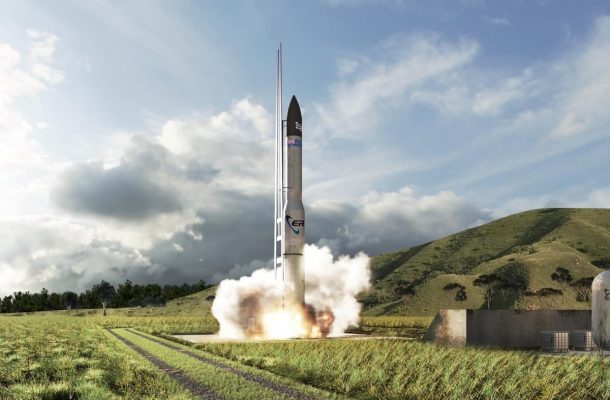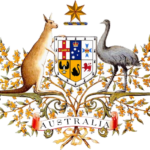Australia’s strategic space update

Last week at the 13th Australian Space Forum in Adelaide, the minister for science and technology, Melissa Price, announced the creation of a unified strategy for Australia’s space sector. It’s an important step forward for Australia in space. ‘The space strategic update,’ Price explained, ‘will provide a vision through to the 2040s that will align efforts across the nation as we transition Australia into a leading space player.’
The Australian Space Agency will lead the development of the update—also known as the SSU—which is expected to take 18 months. The overall aim should be to enhance coordination of investment and activity across states and territories, across government and across Australia’s scientific, civil and defence activities in space.
This last aspect is most important; for too long Australia’s approach to space has kept the defence and civil aspects in separate silos. The Australian Space Agency has had a Department of Defence liaison since its inception in July 2018, but the agency’s 2019 civil space strategy was overwhelmingly focused on the growth of the commercial space sector and the use of space for civil purposes, even though many of the strategy’s national priority areas were in fact dual role in nature.
The SSU should bring the civil and defence aspects of space together in a clear and coherent vision that then allows resources, funding and capability to be applied to achieve policy goals.
For Defence, this development comes amid a space domain review and the formulation of a defence space strategy. The draft strategy has yet to be signed off by Defence Minister Peter Dutton. It makes little sense to talk of a coherent national space strategy designed to bring together the defence and civil areas of space when a separate defence space strategy remains in the works. So, Defence will probably need to do some rewriting and new thinking to ensure that the space domain review and the defence space strategy form coherent components of the broader national document.
Some crucial questions must be considered as the SSU’s development gets underway.
At the most fundamental level, the SSU needs to explain what Australia seeks to do in space, as a 21st-century space power. Space is vast in scope and limitless in possible opportunities. The drafters of the SSU would be wise to boldly embrace a larger and more inspiring vision to match that environment.
The SSU shouldn’t simply build on, or reiterate, the objectives of the 2019 civil strategy, which were to triple the size of commercial space sector, create 20,000 new jobs and expand the sector’s contribution to national GDP. Those are certainly worthy goals for the 10-year timeline of the civil space strategy, and they should be met.
However, for the SSU to be successful, it must be based on a bigger vision that matches the rapid ascendancy of the space domain as both a region of great potential benefit to national enterprises and a contested operational domain that could become a warfighting arena in future conflict.
With this in mind, the first goal of the SSU should be to ensure that Australia is a 21st-century space power in every sense. This means we must develop national space capabilities that fully equip us to pursue national objectives through the medium of space and the use of space capabilities.
That calls for an unbounded perspective on what Australia does in space and a national approach that is agile and responsive as new ways to access and utilise space open up that facilitate space exploration, resource exploitation and innovative uses of space technology on earth.
The SSU must truly be national in scope, bringing the civil components of commercial and space science together with defence and national security space activities. It must also integrate international engagement with like-minded partners consistent with our national interests and values.
Defence will have its own unique requirements, particularly in the classified realm, which won’t lend themselves to discussion or debate in open forums. However, that shouldn’t prevent it from directly participating in building national space capabilities through a whole-of-government space strategy and, most importantly, working with Australia’s rapidly growing commercial space sector to deliver capability in a timely manner.
The creation of the Australian Defence Industry Space Capability Alliance on the same day as the SSU was announced highlighted the potential for Australian small to medium-sized enterprises in the space and defence sectors to work together to produce the equivalent of an Australian prime that could ultimately provide an end-to-end space capability.
The SSU should fully engage with key commercial actors and space policy thinkers outside of government, as a whole-of-nation endeavour. That means the formulation of the SSU must include a process for public consultation and outreach to the broader community in. Some work along these lines was done in 2021 as part of the parliamentary inquiry into developing Australia’s space industry. But it needs to continue and a broader array of space leaders and policy experts need to be brought in at the development phase.
It also is a good idea to promote some bold thinking and goals in any national space strategy. Price announced a decision to negotiate with international agencies to send Australian astronauts into space. What could be more inspiring to young Australians thinking about a career in space than seeing an Australian standing on the lunar surface, with an Australian flag on their space suit (previous Australian astronauts had to become US citizens to fly)?
With a time horizon out to 2040, the SSU will need to anticipate and be responsive to the rapid changes that will occur in the space sector, in particular, the commercialisation and even industrialisation of space.
It was therefore important that Price announced the government’s decision to no longer impose partial cost recovery for launch applications—in effect abolishing application fees for launch permits. This move opens doors to establishing space launch facilities in this country and will help ensure that Australian space launch providers are internationally competitive.
Australia is now poised to be able to launch Australian satellites on Australian launch vehicles from Australian launch sites on a regular basis. There’s broad support for a sovereign launch capability, which is a key pathway for Australia’s future as a space power.
For defence, a sovereign launch capability opens up all sorts of previously unthinkable ideas. The establishment of a Defence Space Command in January 2022 was a big step away from previous approaches that were content to be dependent on other nations for access to space. Defence should now look towards a more fully developed defence space capability that goes beyond current projects such as JP-9102 (satellite communications), DEF-799 (geospatial intelligence) and JP-9360 (space domain awareness).
The SSU needs to move Australia towards an ambitious future where air and space capabilities, including sovereign launch for the defence force and a composite space control program, are realised—perhaps by 2040.
Dr Malcolm Davis is a Senior Analyst at the Australian Strategic Policy Institute. His research interests include capability development, future warfare and military technology, Chinese military modernisation and Asian security.












